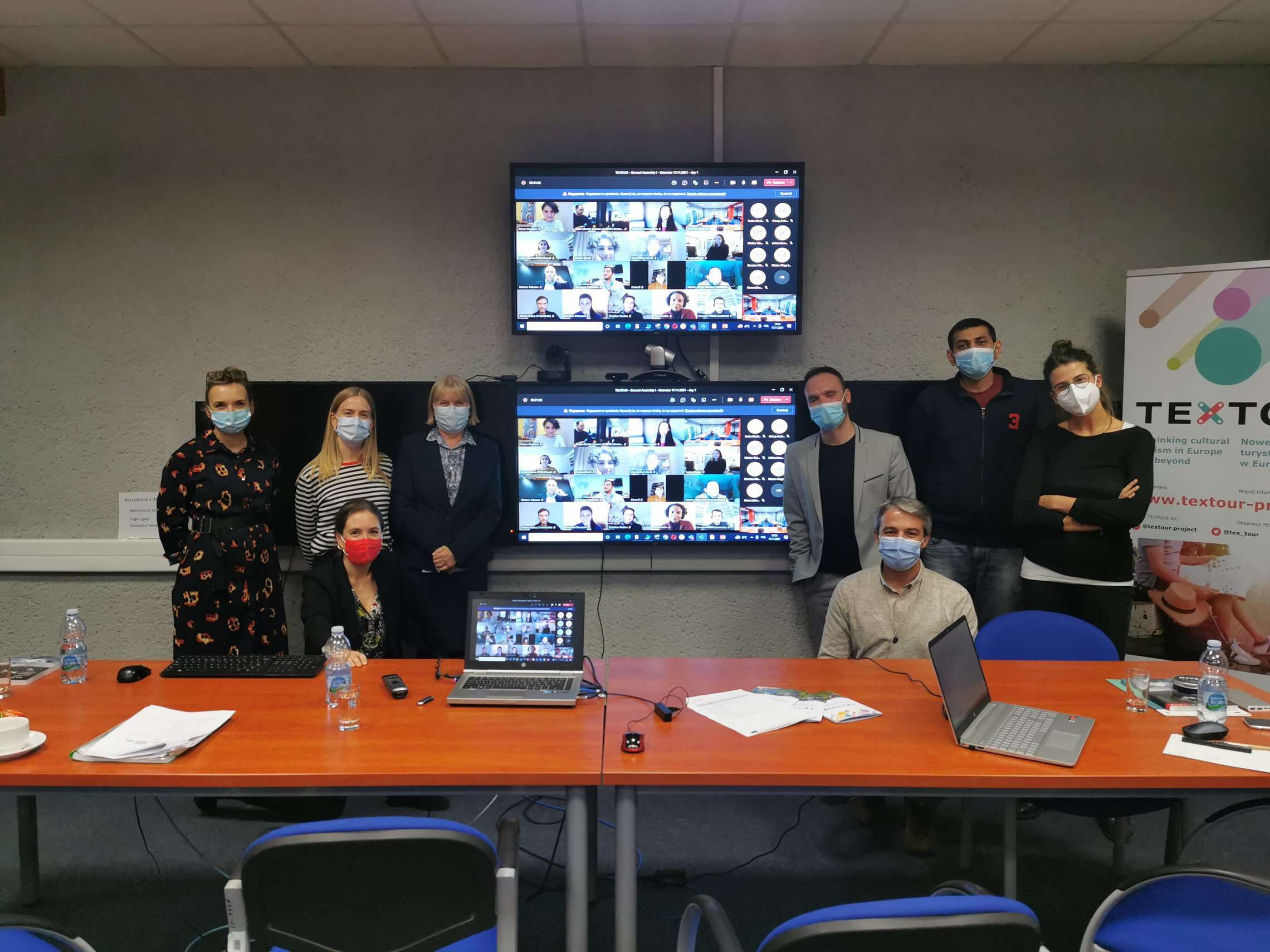Published on 30 Nov 2021
On the 17th and 18th of November the TExTOUR consortium gathered in Katowice (PL) and online for the first general assembly of the project
Almost one year has passed since we kicked off TExTOUR in January 2021, and finally some of us had the chance to meet in person for the first general assembly which took place in Katowice (Poland). The meeting was hosted by The Institute for Ecology of Industrial Areas (IETU) – the partner responsible for the design of TExTOUR’s methodology and supporting partner for the Tarnowskie Góry pilot. IETU is specialized in revitalisation of post-industrial sites and cooperates with regional and local authorities and other partners in the Upper Silesia’s region as well as at national and international level.
The meeting was the occasion to take stock with all the participants, joining both online and in person, of the achievements of the first months of the project and to reflect on the next steps. We also visited the Tarnowskie Gory silver mine which is one of the eight pilots involved in the project.
The first activities: laying the foundation of the project
In the last months we prepared a stakeholder engagement plan where all the pilots defined the strategy they will adopt to engage with their local communities. The first engagement activities already took place with the Labs Communities that were created around the 8 Pilots.
We co-created, with the help of the pilots, our data collection methodology, which foresees a combination of quantitative and qualitative data sources. Beside identifying the three data layers and providing the instructions for their collection, in the methodology we also highlight the future use of the data. Data collection is currently undergoing and will end by December 2021.
Another important activity was a structured literature review covering both the academic literature as well as policy reports. This allowed us to reach a comprehensive understanding on how cultural tourism can contribute to increasing economic competitiveness and social welfare of regions and countries. We reviewed cultural tourism projects, the current heritage concepts and definitions of the main heritage-based tourism categories, and cultural tourism case studies that already undertook an impact assessment. From the latter we extracted indicators that we compared with the European Tourism Indicator System.
Communication activities kicked off as well with the setup of the project’s website and social media channels, the release of the project video and of the leaflet.
From a management point of view, we are proud to say that all our deliverables were timely submitted!
Communication activities kicked off as well with the setup of the project’s website and social media channels, the release of the project video and of the leaflet.
From a management point of view, we are proud to say that all our deliverables were timely submitted!
Entering a new phase of the project with Cultural Tourism Labs at the heart
Now we enter in a new phase of the project in which Cultural Tourism (CT) Labs, that will be set up in all the pilots, will play a crucial role. CT labs are innovation ecosystem working groups where methodologies, strategies, and our platform will be tested and validated in a participatory way.
As a useful tool for the CT Lab, we will develop a set of Innovative Cultural Tourism maps, which will highlight local conditions and culture tourism capital, functional relationships, and range of CT impact, and scope of potential threats.
The maps will be the result of an excercise in which each pilot will prioritize the type of tourism in their area. They will identify the features that strengthen the potential, and those that are developmental barriers to cultural tourism development. Key performance indicators (KPI) will be defined for culture tourism characteristics relevant for increasing cultural tourism impacts.
Visting the silver mine of Tarnowskie Góry
During the two-days meeting we also had the opportunity to visit the Historic Silver Mine in Tarnowskie Góry. The mine was active from the XV-XVI century until 1913 and is now UNESCO World Heritage Site, also thanks to the work of the Tarnowskie Góry Land Lovers Association.
Our guide Theresa, dressed as a miner of the times in which the mine was active, conducted us in the narrow corridors from the 18th and 19th centuries. We walked through a route of 1.7 km, with also a small stretch crossed in boats through a flooded corridor. It was funny bumping into so many children on a school trip and saying them “Szczęść Boże!”, the miners’ greeting. We also visited the open-air steam engine museum in which the engines that were used to drain water from the mine shafts until 1834 are preserved.
The visit was really exciting but also gave us some food for thought on the hard conditions in which miners had to work and live in the past centuries.
We come back home, also those who joined us virtually, with a lot of fresh and new ideas and loads of energy for the upcoming activities.
We will keep you posted!




